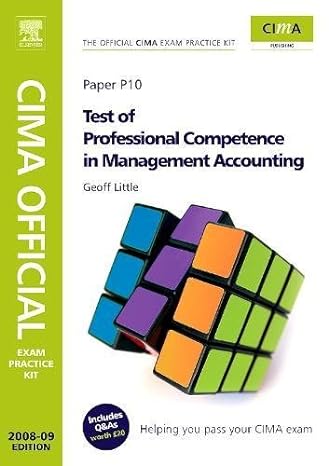Question
Consider the operations of an electronics store for a period of one year. The store sells a cheap smartphone for $100. The wholesale price paid
Consider the operations of an electronics store for a period of one year. The store sells a cheap smartphone for $100. The wholesale price paid by the store to the manufacturer is $20. A certain number of customers arrive every day with the intention of buying a smartphone. Depending on the inventory in stock, the store may or may not be able to cover the demand. Excess demand is assumed to be backordered at a penalty cost of $30 for each customer backordered. The store starts with 20 smartphones in stock at the beginning of the first day and there are no orders outstanding. A new order can only be placed at the end of the day after customers have been served. The new smartphones will arrive 5 days after placing the order, at the end of the day. So, the backordered customers have to wait the next morning to receive their orders. There is no fixed delivery cost but the manufacturer may increase the wholesale price if a faster replenishment is required. The number of customers on a day follows a normal distribution with a mean of 10 and a standard deviation of 3. Each arriving customer wants to buy the product, either immediately or after being backordered. The store owner is interested in the total operational costs which are composed of the following elements. Storage cost: $10 per day per smartphone in stock Penalty cost: $30 per day per each customer backordered
Question 1: Calculate the optimal order-up-to level.
Question 2: Calculate the expected backorder and expected excess inventory per day when the order-up-to level is set equal to its optimal level you found in Question 1.
Question 3: Using the cost parameters and the results of Questions 1 and 2, calculate the expected daily profit.
Question 4: Now create an Excel spreadsheet for one year and simulate the profit generated everyday. Make sure that proper demand distribution is used. Calculate the expected profit for the optimal order-up-to level calculated in Question 1. Compare the result with the one you found analytically in Question 3.
Question 5: Give the 95% confidence interval for the annual expected profit.
Question 6: What is the fill rate?
Question 7: The manufacturer now considers reducing the lead time from 5 days to 4 days. What is the maximum cost premium in percentage (i.e., the percentage increase in the wholesale price) that the store is willing to pay to reduce the lead time by one day?
Step by Step Solution
There are 3 Steps involved in it
Step: 1

Get Instant Access to Expert-Tailored Solutions
See step-by-step solutions with expert insights and AI powered tools for academic success
Step: 2

Step: 3

Ace Your Homework with AI
Get the answers you need in no time with our AI-driven, step-by-step assistance
Get Started


